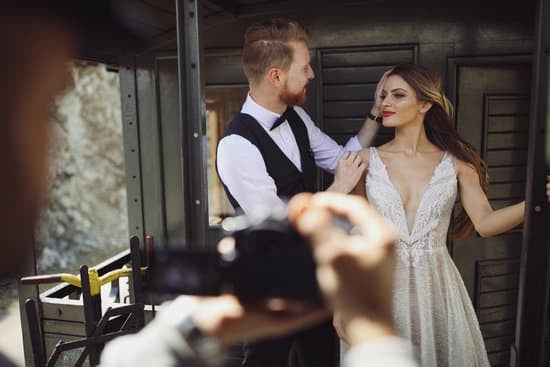Planning a wedding involves many decisions, including the size and composition of the wedding party. “How many people in a wedding party” is a common question that couples ask themselves as they plan their big day. The wedding party plays a significant role in the ceremony and celebration, from supporting the couple to adding flair and personality to the event.
When it comes to determining the ideal number of individuals for your wedding party, several factors need to be considered. From traditional roles and responsibilities to managing a large wedding party, there are various aspects to take into account. Additionally, non-traditional setups and alternatives are becoming increasingly popular, offering couples more flexibility and creativity when it comes to choosing their wedding party.
As couples navigate through the various options for their wedding party, it’s essential to understand the roles and significance of each member. This article aims to provide insight into choosing the right number of people for your wedding party while exploring traditional and non-traditional setups, as well as tips for managing both large and small groups.
Whether you’re aiming for an intimate affair or a grand celebration, deciding on the number of people in your wedding party is an important aspect that can impact your special day.
Choosing the Right Number of People for Your Wedding Party
Consider Your Budget and Venue
When choosing the number of people for your wedding party, it’s important to consider your budget and the size of your venue. A larger wedding party can mean more expenses, such as additional bridesmaid or groomsmen gifts, flowers, and attire. Additionally, a smaller venue may not be able to accommodate a large wedding party, limiting your options for where you can hold your ceremony and reception.
Think About Your Closest Relationships
One of the key factors in determining how many people should be in your wedding party is the depth of your relationships with potential members. It’s important to choose individuals who are truly meaningful to you and your partner. Consider including family members, close friends, and those who have played significant roles in your lives. Keep in mind that having too many people can dilute the significance of the occasion, so focusing on quality over quantity is crucial.
Consult With Your Partner
Deciding on the ideal number of people in your wedding party should be a joint decision between you and your partner. Take into account each other’s preferences, as well as any cultural or religious expectations. It’s essential to communicate openly about what feels right for both of you and how many people will make the celebration feel truly special. Remember that this is ultimately about celebrating your love and commitment with those who matter most to you.
By considering these factors and having thoughtful discussions with those involved, you can determine the optimal number of people for your wedding party that will create a meaningful and memorable experience for all.
Traditional Roles and Responsibilities Within the Wedding Party
When it comes to traditional wedding parties, there are certain roles and responsibilities that have been upheld for generations. These roles not only bring a sense of order to the ceremony but also play a crucial part in making sure everything runs smoothly on the big day. Here is a breakdown of the traditional roles and responsibilities within a wedding party:
1. Maid/Matron of Honor: The maid or matron of honor is usually the bride’s right-hand woman. She assists with planning the bridal shower, bachelorette party, and helps the bride get ready on her wedding day. During the ceremony, she holds the bride’s bouquet and helps manage the bridesmaids.
2. Best Man: The best man is essentially the groom’s counterpart to the maid/matron of honor. He helps plan the bachelor party, keeps track of important documents (like the marriage license), and takes care of any last-minute details for the groom.
3. Bridesmaids/Groomsmen: Bridesmaids and groomsmen are responsible for providing support and assistance to the couple throughout the entire wedding process. This may include attending dress fittings, helping with DIY projects, and standing by their friend’s side during both pre-wedding events and at the altar during the ceremony.
4. Flower girl/Ring bearer: Traditionally, young children are often chosen to take on these roles in a wedding party. They are responsible for walking down the aisle before or during specific parts of the ceremony while carrying flowers or delivering rings.
5. Ushers: Part of their role includes seating guests at the ceremony venue before it starts.
It’s important to keep in mind that these traditional roles can be adapted according to your specific needs and preferences – there is no set number as to how many people should be involved in your wedding party, making it up to you whether you want a large group or just a few close friends by your side on your special day”.
Breakdown of the Ideal Size of a Wedding Party
The size of a wedding party can vary depending on personal preferences, cultural traditions, and practical considerations. The ideal number of people in a wedding party is often a subject of much debate, but ultimately it comes down to what works best for the couple getting married. While some may prefer a large entourage to accompany them on their special day, others may opt for a more intimate and smaller group.
It’s important to consider the logistics of having a large wedding party, as well as the potential challenges that may arise. The larger the wedding party, the more coordination and organization will be required. This means that there may be more opinions to consider when making decisions about attire, schedules, and other important details. On the other hand, a smaller wedding party may make it easier to plan and manage, allowing for a more relaxed and intimate experience.
When deciding on the number of people in your wedding party, it’s crucial to prioritize meaningful relationships over obligation or societal expectations. Ultimately, the ideal size of a wedding party is one that includes the people who are truly important to you and who will support you throughout the wedding planning process and on your big day.
| Size of Wedding Party | Pros | Cons |
|---|---|---|
| Large | More help with planning and tasks | Requires more coordination and organization |
| Small | Easier to plan and manage | Limited in terms of roles and responsibilities |
Pros and Cons of Having a Large Wedding Party
Having a large wedding party certainly has its benefits, but it also comes with its own set of drawbacks. One of the major pros of having a large wedding party is the ability to include more of your closest friends and family members in your special day.
This can create a sense of inclusivity and make everyone feel like an important part of the celebration. Additionally, a large wedding party can also help with various tasks such as planning and organizing pre-wedding events, as well as providing emotional support for the bride and groom.
On the other hand, there are some downsides to having a large wedding party as well. One of the main challenges is coordinating such a big group and making sure everyone is on the same page. It can be difficult to manage schedules, fittings, rehearsals, and other necessary arrangements when dealing with a large number of people. Additionally, having a large wedding party may also lead to increased expenses for things like attire, gifts, and accommodations for pre-wedding events.
Ultimately, whether or not to have a large wedding party comes down to personal preference and practical considerations. It’s important to weigh the pros and cons carefully before making a decision. Each couple will have their own unique circumstances and priorities that will influence how many people they choose to include in their wedding party.
Tips for Managing a Large Wedding Party
Having a large wedding party can be both exciting and overwhelming. With more people involved, there are certainly more things to manage and consider. However, with the right tips and strategies, managing a large wedding party can be a smooth and enjoyable experience for everyone involved.
Clear Communication Is Key
One of the most important tips for managing a large wedding party is to maintain clear communication with all members. From the beginning, make sure that everyone understands their roles and responsibilities, as well as any important dates or deadlines they need to be aware of. Keep open lines of communication through group chats, emails, or regular meetings to ensure that everyone is on the same page.
Delegate Tasks Wisely
With a large wedding party, it’s essential to delegate tasks wisely in order to avoid feeling overwhelmed. Assign specific responsibilities to members of the wedding party based on their strengths and availability. Whether it’s organizing fittings, coordinating transportation, or helping with DIY decorations, ensuring that each person has a clear task will help alleviate any potential stress.
Schedule Time for Bonding
When managing a large wedding party, it’s important to schedule time for bonding activities. This could include group outings or even just regular check-ins where everyone can get together and share ideas or concerns. Fostering a sense of unity and camaraderie within the wedding party will not only create lasting memories but also make the overall experience more enjoyable for everyone involved.
By following these tips for managing a large wedding party, you can ensure that the planning process runs smoothly and that everyone feels valued and included in this special occasion. While having a larger wedding party may require more organization and coordination, it also presents an opportunity for creating meaningful connections with loved ones during this significant time in your life.
Small Wedding Parties
A small wedding party can create an intimate and simple atmosphere for your special day. While traditional weddings often involve large bridal parties, an increasing number of couples are opting for smaller, more intimate gatherings. A small wedding party can offer many benefits, including a more relaxed and intimate setting, less stress and fewer logistical challenges.
The ideal size of a small wedding party typically includes anywhere from one to three people on each side – the bride’s and the groom’s. This usually consists of a maid of honor or best man, followed by one or two bridesmaids or groomsmen. This smaller group can allow for closer relationships and more meaningful involvement in the wedding planning process.
One advantage of having a smaller wedding party is that it saves time and money. With fewer people involved, there may be less coordination needed for activities such as fittings, rehearsals, and transportation.
Additionally, with fewer members in the wedding party, there may be less need for elaborate gifts or accommodations. However, it is important to consider how many people you want to include in your wedding party based on your personal relationships and the level of support you desire on your big day.
| Benefits | Considerations |
|---|---|
| More relaxed and intimate atmosphere | Potential for hurt feelings if certain friends or family members are not included |
| Less stress and logistical challenges | Limited options when it comes to delegation of responsibilities within the wedding party |
| Cost-effective | Potential for increased responsibilities for each member of the smaller wedding party |
Non-Traditional Wedding Party Setups and Alternatives
When it comes to wedding parties, many couples are opting for non-traditional setups and alternatives that better fit their personalities and preferences. One popular alternative is having a mixed-gender wedding party, where the bride and groom have their closest friends and family members stand by their side regardless of gender. This allows for a more inclusive and modern approach to the wedding party.
Another non-traditional setup is having a smaller, more intimate wedding party, or even opting to go without one altogether. Some couples choose to have just one or two people in their wedding party, focusing on quality over quantity. This can create a more intimate and meaningful experience for those involved.
For those who want to stray from the typical roles and responsibilities within a wedding party, there are plenty of non-traditional alternatives to consider. Some couples choose to have their furry friends as part of the wedding party, with pets serving as ring bearers or simply joining in on the celebration. Others may opt for close family members or mentors to take on special roles within the wedding instead of traditional bridesmaids or groomsmen.
Regardless of which non-traditional setup or alternative you choose for your wedding party, it’s important to consider what feels right for you as a couple. The key is to create a meaningful and memorable experience that reflects your unique love story, regardless of how many people are included in your wedding party.
How to Decide on the Number of People in Your Wedding Party
When it comes to deciding on the number of people in your wedding party, there are a few key factors to consider. The significance of the wedding party cannot be underestimated, as they play a crucial role in supporting and celebrating the couple as they begin their married life together. Choosing the right number of people for your wedding party is important for ensuring that everyone has a meaningful role and that the dynamics within the group are positive.
Traditionally, wedding parties have included a specific number of people, with designated roles and responsibilities for each member. However, modern couples have more flexibility in deciding the size and structure of their wedding party. While there is no one-size-fits-all answer to how many people should be in a wedding party, it’s important to consider your own personal preferences, as well as the logistical aspects such as budget, venue size, and overall vision for your special day.
It’s essential to weigh the pros and cons of having a large wedding party. While a large group can provide plenty of support and create a lively atmosphere, it can also be more challenging to coordinate and manage.
On the other hand, small wedding parties offer an intimate and simple vibe, allowing for deeper connections between each member. Ultimately, couples should focus on what feels right for them and their unique situation when deciding on the number of people in their wedding party.
Frequently Asked Questions
How Many People Should Be in Wedding Party?
The number of people in a wedding party ultimately depends on personal preference and the size of the wedding. Traditionally, it includes a maid of honor, best man, bridesmaids, groomsmen, and flower girl or ring bearer, but couples can choose to have a smaller or larger group based on their needs.
Is 7 Bridesmaids Too Many?
Whether 7 bridesmaids is too many really depends on the couple’s preferences and the scale of the wedding. Some couples may want a larger group to involve more friends and family members, while others may feel more comfortable with a smaller, more intimate party.
It’s important to consider logistics and budget when deciding on the size of the wedding party.
What Is a Good Size for a Wedding Party?
A good size for a wedding party is typically around 4 to 6 people, including both bridesmaids and groomsmen. This allows for close friends and family members to be involved without causing logistical challenges or added expenses.
However, there is no one-size-fits-all answer – each couple should determine what works best for them based on their personal preferences and circumstances.

I have been involved in marriages for over 20 years helping couples and singles understand more about them.





